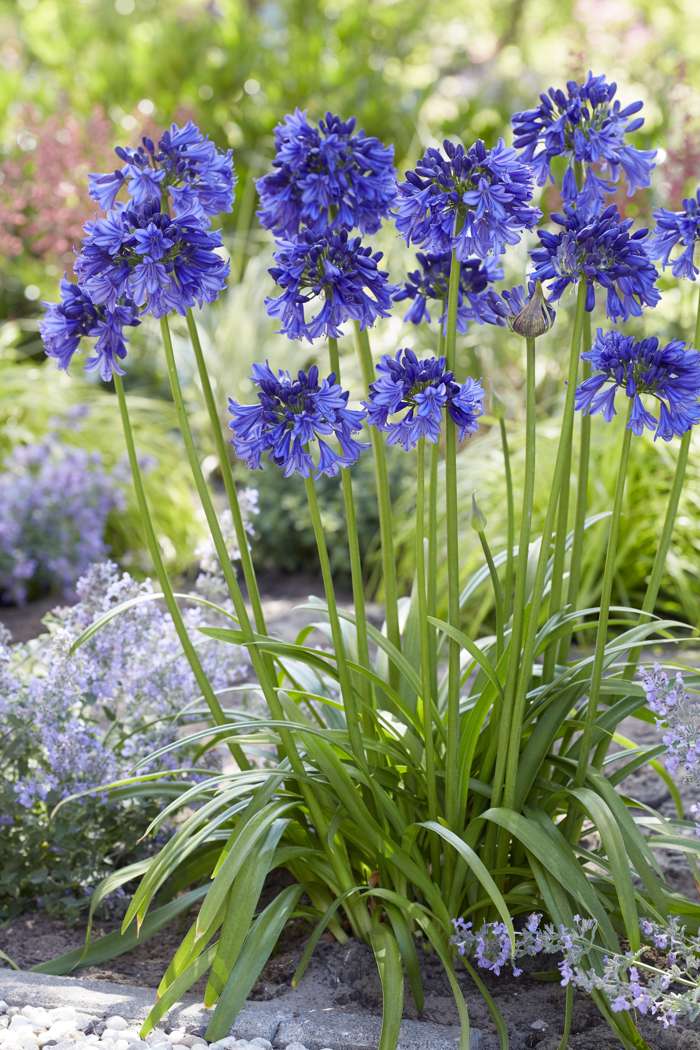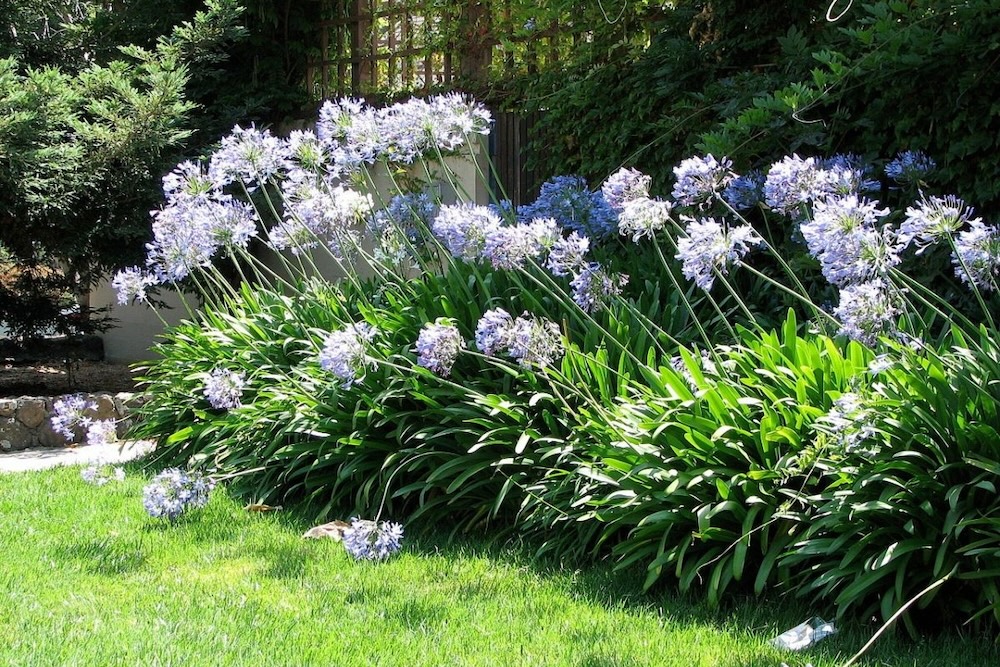Just how to Plant and Maintain Agapanthus in Your Yard
Just how to Plant and Maintain Agapanthus in Your Yard
Blog Article
Releasing the Secret to Effective Agapanthus Farming: Tips and Techniques for a Flourishing Yard
In the world of horticulture, cultivating agapanthus effectively needs a calculated method that encompasses various aspects of plant care. By comprehending the nuances of agapanthus growing, one can produce an atmosphere where these plants thrive and bloom perfectly.
Growing Agapanthus: Ideal Practices
When planting Agapanthus, proper soil prep work is essential for making sure effective growth and development of these attractive flowers. Agapanthus, generally understood as Lily of the Nile or African lily, thrives in well-draining soil with a somewhat acidic to neutral pH degree - Agapanthus. Prior to planting, it is crucial to change hefty clay soils with organic issue such as garden compost or peat moss to enhance water drainage and offer necessary nutrients for the plants
To plant Agapanthus, pick a place that receives complete sunshine to partial color, as this will certainly advertise healthy growth and bountiful flowering. Dig a hole twice the diameter of the plant's root round and position the Agapanthus at the same depth it was formerly growing. Delicately backfill the hole with dirt, pushing down strongly to get rid of any kind of air pockets around the roots.
Water the freshly planted Agapanthus extensively and continue to maintain the dirt evenly damp, specifically during the plant's active expanding season. Agapanthus. Applying a well balanced plant food once a month can better support the plant's growth and blooming. By adhering to these best techniques for growing Agapanthus, you can produce a spectacular screen of these fascinating flowers in your yard
Perfect Soil Conditions for Agapanthus
For optimal growth and blooming success of Agapanthus plants, guaranteeing the soil conditions are ideal is crucial. Agapanthus favors dirt that is abundant in nutrients, so incorporating a well balanced fertilizer throughout the growing period can advertise healthy and balanced growth and vibrant blossoms.

Watering and Feeding Tips
To make certain healthy growth and lively flowers, appropriate watering and feeding techniques are important for successful Agapanthus growing. Agapanthus plants profit from regular watering, especially during the growing season. It is recommended to water deeply once a week, ensuring the soil is moist yet not saturated. During hot weather or in pots, more frequent watering may be necessary to stop the dirt from drying out totally.
When it involves feeding Agapanthus, a balanced plant food with equivalent components nitrogen, phosphorus, and potassium can be used in the spring to promote healthy and balanced development and blooming. Slow-release plant foods are ideal for supplying nutrients slowly over an extended period. Avoid over-fertilizing, as this can lead to too much foliage development at the expense of blossoms.
In addition, integrating organic issue like compost into the dirt can enhance nutrient levels and enhance soil framework, helping in the overall health and wellness of the Agapanthus plants. By following these watering and feeding suggestions, garden enthusiasts can ensure their Agapanthus plants thrive and generate magnificent screens of blossoms.
Pruning and Deadheading Strategies
Proper trimming and deadheading techniques play an essential role in preserving the health and appearances of Agapanthus plants, matching the essential methods of watering and fertilizing for successful farming. Pruning Agapanthus entails removing spent blossom heads, dead or yellowing fallen leaves, and general shaping of the plant to promote far better development. Deadheading, the process of eliminating discolored flowers, not just boosts the plant's look however additionally encourages further flowering.
When deadheading Agapanthus, it is advisable to clip off the blossom stem at the base using sharp, clean shears. This procedure reroutes the plant's energy from seed production back right into origin and foliage development, advertising a much healthier and much more robust plant. Regular deadheading can expand the blooming period of Agapanthus and protect against self-seeding, which can bring about overcrowding.
In terms of pruning, Agapanthus normally take advantage of resource a light trim after flowering to clean up the plant and urge fresh growth. Cutting down the invested blossom stems and getting rid of any type of dead or broken vegetation aids preserve the plant's vitality and general appearance. However, it is necessary to stay clear of reducing right into the crown of the plant, as this can damage its wellness.

Protecting Agapanthus From Pests and Diseases
Carrying out reliable pest and condition monitoring methods is important to protecting the health and vitality of Agapanthus plants in farming. Agapanthus are normally hardy plants, however they can still fall target to different insects and illness if not properly cared for. One common parasite that affects Agapanthus is the Agapanthus borer, a caterpillar that passages into the plant, causing damage to the site here flowers and fallen leaves. To avoid problems, regular examination of the plants is necessary. If borers are discovered, they can be manually eliminated, or insecticidal soap can be made use of as a control procedure.
In enhancement to pests, Agapanthus are vulnerable to diseases such as origin rot and fungal leaf spots. These issues can commonly be prevented by making sure correct drainage and staying clear of overwatering. If indicators of illness appear, impacted parts of the plant need to be promptly eliminated to stop more spread. Fungicides may additionally be made use of as a treatment step, complying with the supplier's guidelines very carefully. By remaining vigilant and attending to insect and illness concerns without delay, garden enthusiasts can click resources aid their Agapanthus flourish and flourish.

Final Thought
To conclude, successful cultivation of agapanthus calls for proper planting strategies, ideal soil conditions, adequate watering and feeding, regular trimming and deadheading, and defense from insects and conditions. By complying with these ideas and tricks, gardeners can guarantee a flourishing yard full of attractive agapanthus flowers. Agapanthus. Remember to keep regular care and interest to information to advertise the wellness and longevity of these stunning plants
When planting Agapanthus, appropriate dirt prep work is essential for making sure effective growth and advancement of these attractive flowers.Water the newly planted Agapanthus completely and proceed to maintain the dirt evenly moist, especially during the plant's active expanding period.For ideal development and growing success of Agapanthus plants, making certain the dirt problems are ideal is essential. When growing or hair transplanting Agapanthus, make certain the dirt is well-prepared to supply the essential structure for the plants to establish themselves successfully. One usual parasite that influences Agapanthus is the Agapanthus borer, a caterpillar that tunnels right into the plant, triggering damage to the leaves and flowers.
Report this page